From one longtime chair of the House Science Committee in response to a New York Times Interview
They (meaning scientists) generally speaking, have too great a faith in the power of common sense and reason. That's not what drives most political figures, who are concerned about emotions and the way a certain event will affect their constituency
This means:
a) Congress is not objective
b) Congress primarily acts to serve local agendas.
In general, this effectively thwarts the scientific method as a means of making a decision, espeically large scale decisions. For example, climate change initiatives that might work in the American NE will unlikely work in the PNW. These regional loyalty already does have negative effects when it comes to energy policy. More than on scholar has suggested remapping the USA from 50 states to larger scale regions. . Overall, the combination of a&b above can cause scientists to just give up and plenty of this has happened.
In general, this best description of policy making is known as incrementalism --- policymakers make small changes to existing policies instead of large-scale changes. Many increments will still fall well short of producing large-scale change.
While there are many ways to visually represent the science-policy cycle (for instance Figure 4.1 in the book which makes no sense to me ). Below is the European version of the process, which seems more sensible, The JRC is a newly established entity within the EU that the US should copy. The biggest item that seems to be missing in the case of the US is Policy Evaluation :
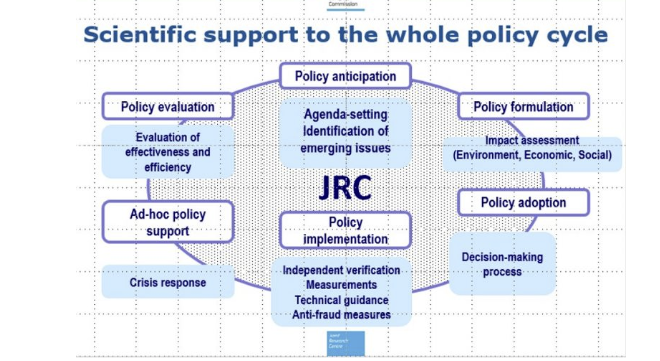
The basic problem as described in the text book:
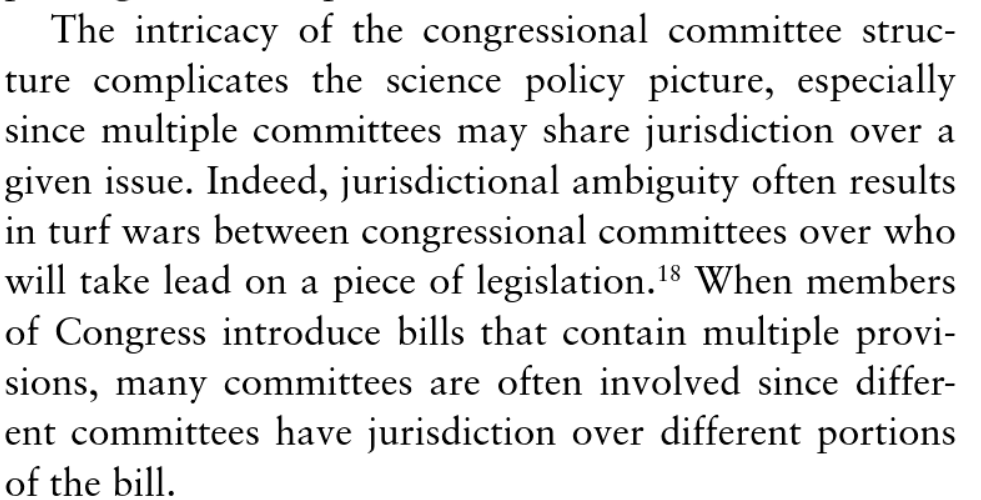
Note: current examples of this are both the passed American Rescue Plan and the coming Infrastucture proposal in which a lot of small "extras" are sort of snuck into the main theme.
Now, the appropriations system is also screwed up. Just because Congress decides to authorize a particular policy or project, doesn't mean that funding is actually appropriated. Again as well described in the text:
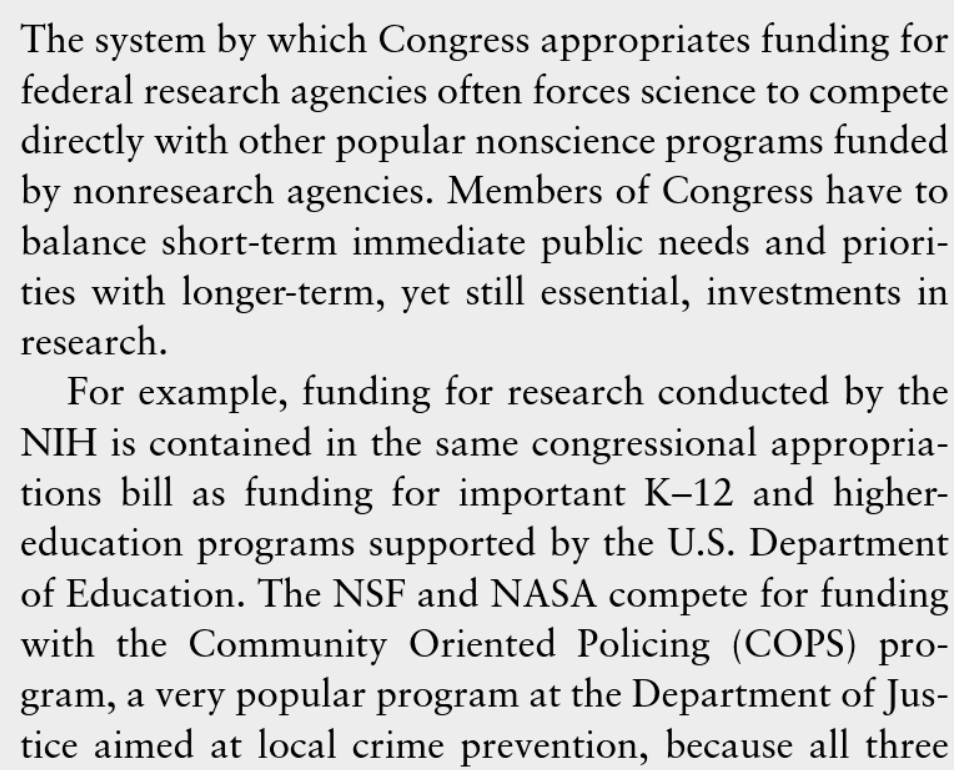
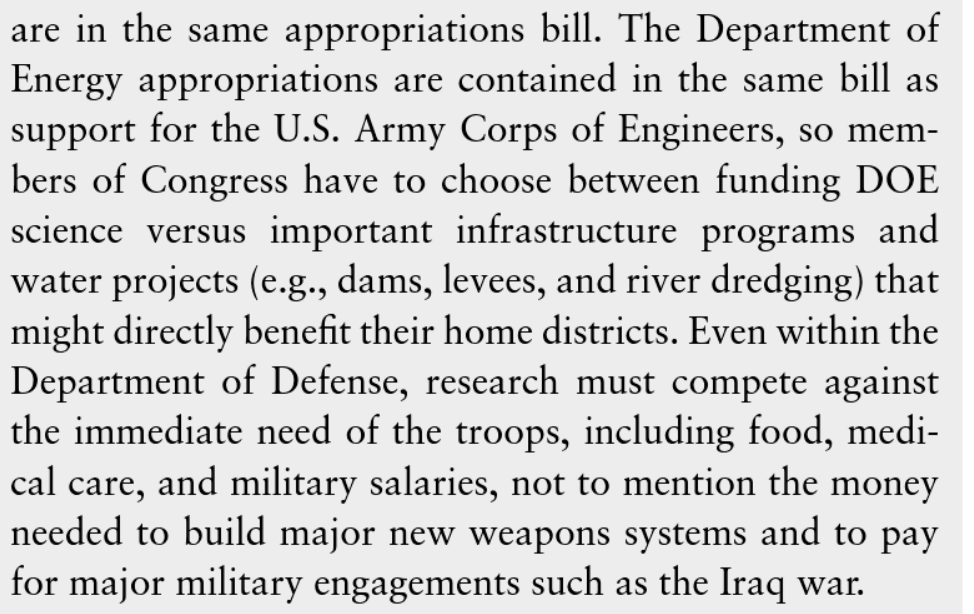
After the appropriations process happens, a large amount of federal research funding is earmarked toward agencies that "conduct research in support of a broader mission". These are:
Why is the NSF not among these agencies?
In general, agencies fund proposal via the competitive peer-review process. The text gives a pretty good description of this.
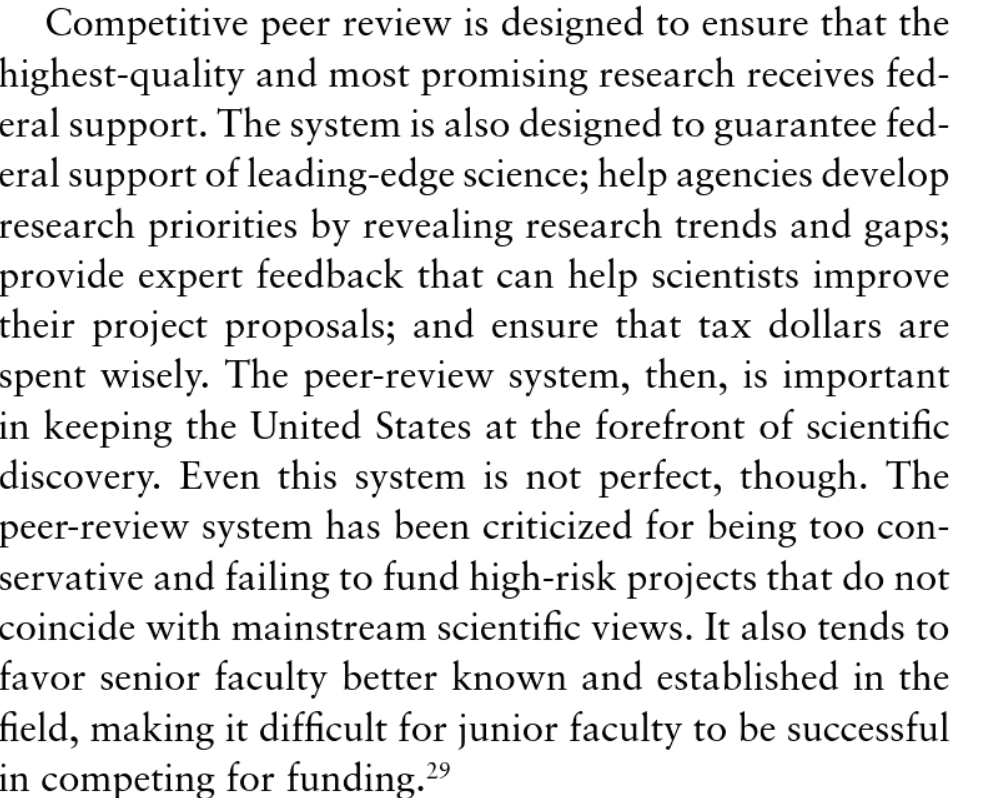
Overall the entire process seems best summed up by this comment from a former member of congress who sat on the House Science Committee:
In the final analysis, after science and technology decisions have been subject to the judgement of conflicting objectives, they are then subject to the reality of the Federal budget process. First research and development programs must compete with other Federal programs for the availability of limited Federal dollars [this is NOAA's principle problem] ... for there will always be more programs and projects than there will be funds to implement them. Thus another set of choices in how to allocate the funds to gain the greatest benefits must be faced
In most cases, the allocation process fails to achieve that stated goal. Many time what results is the HALF-ASS allocation where everything gets something, but nothing gets what it needs to be successful ...
|